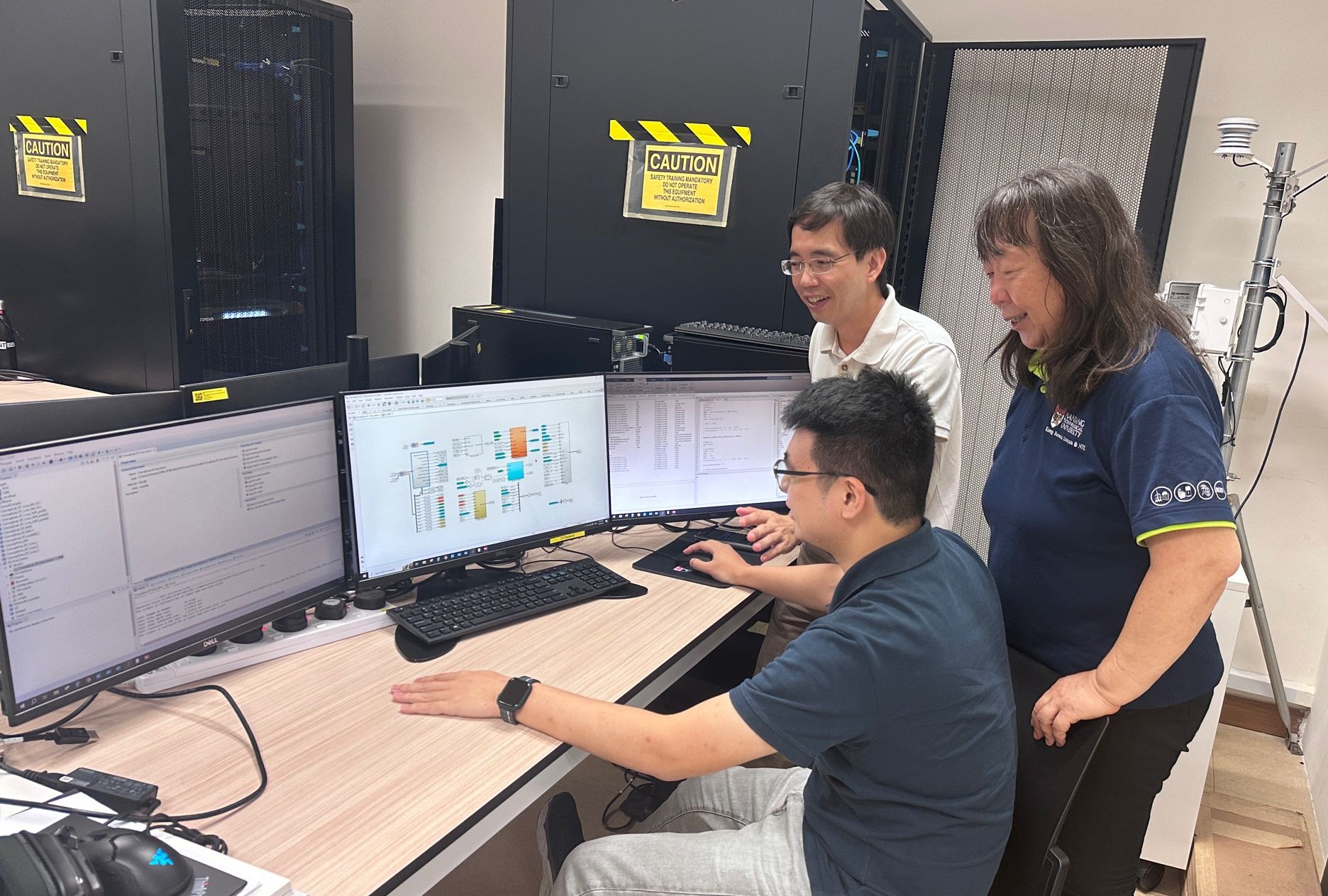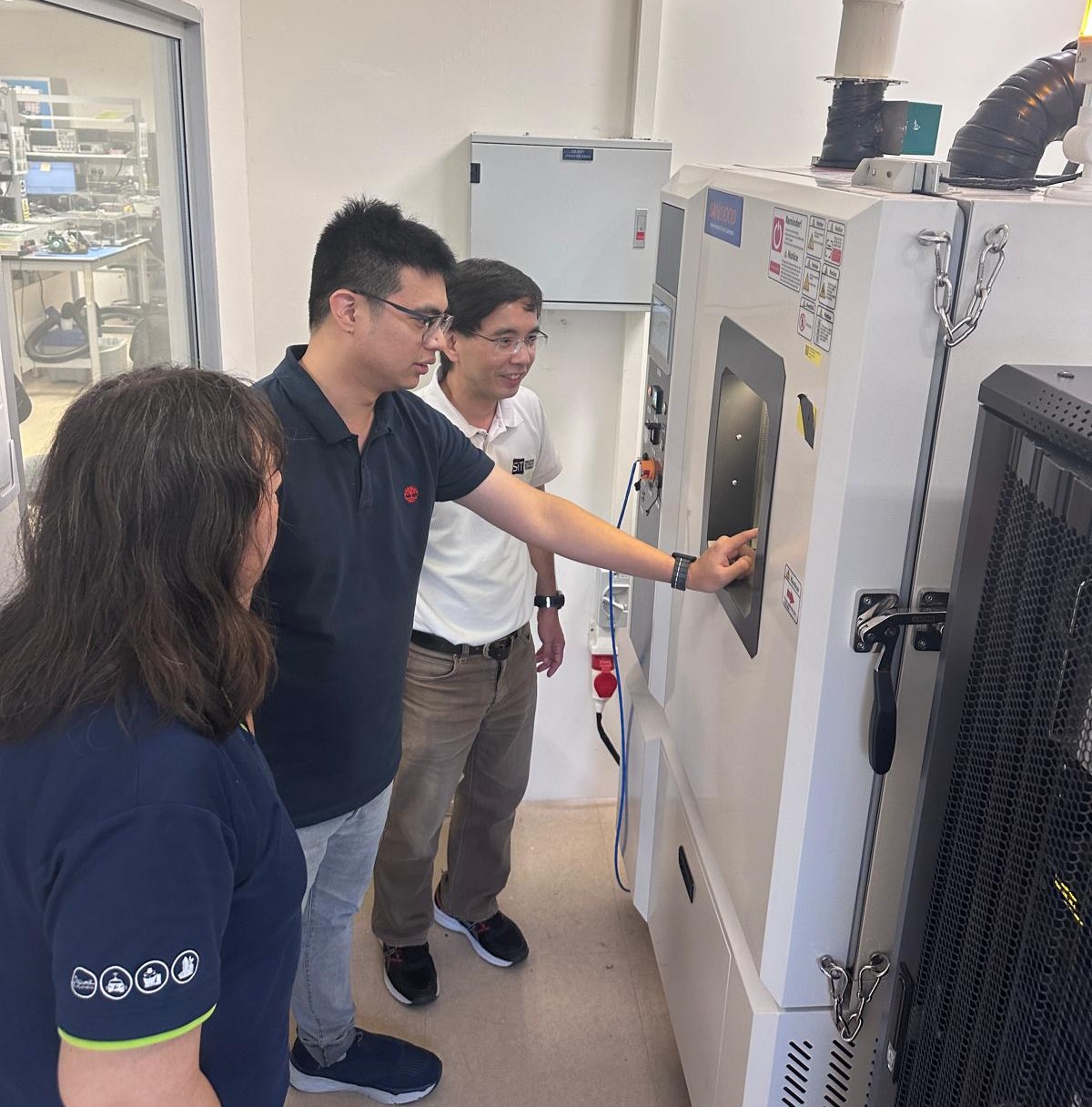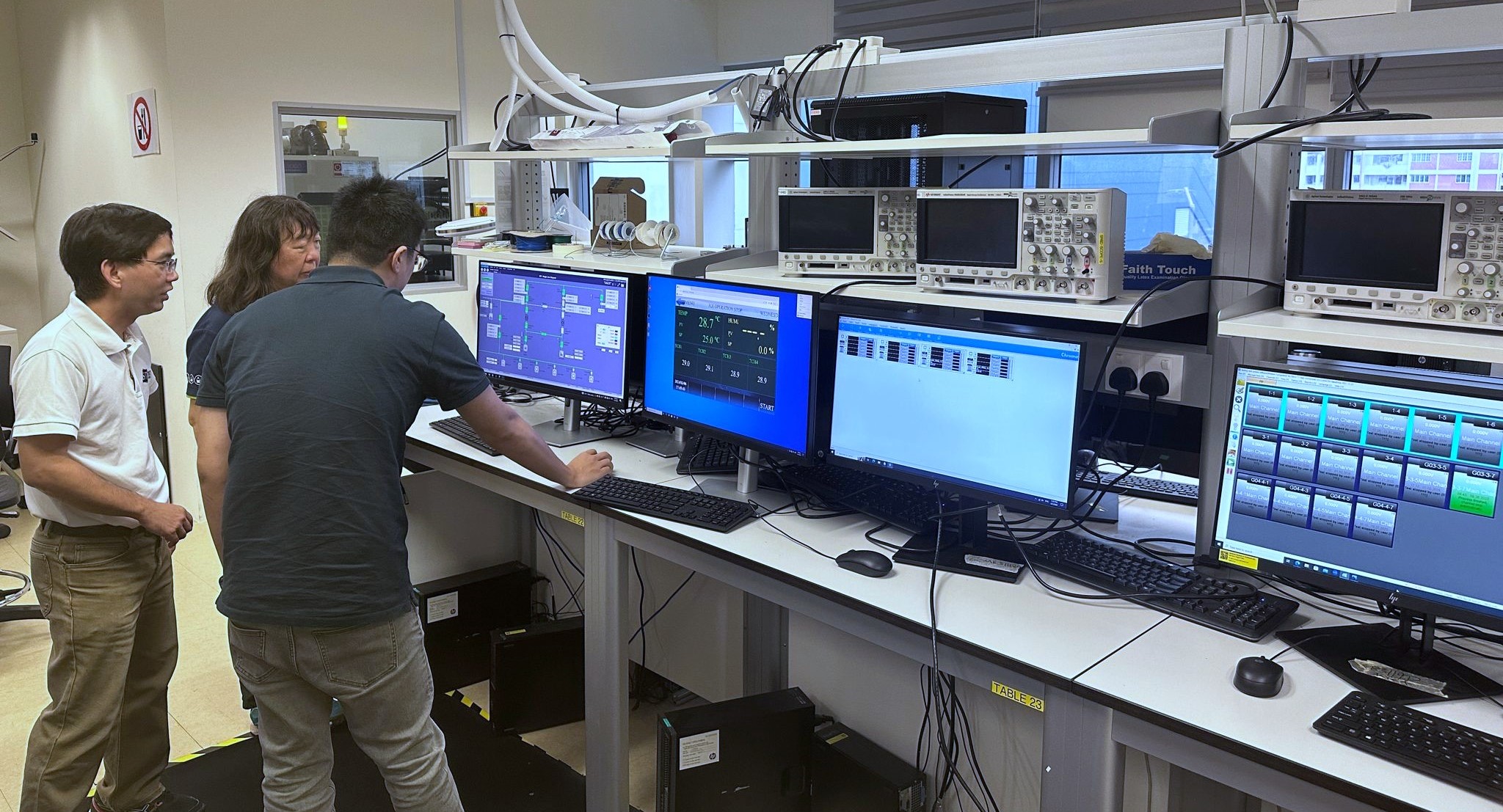SIT researchers have developed a digital twin of the Punggol Campus microgrid, which can simulate how the campus microgrid operator will respond to scenarios such as a sudden surge in demand or a power fault.

(Clockwise from top) The research team: Associate Professor Soh Chew Beng, lead Co-Principal Investigator Dr Cao Shuyu, Co-Principal Investigator and research staff Lim Wei Jun in a discussion about the microgrid digital models that Wei Jun has built in a real-time simulation software system. (Photo: Soh Chew Beng)
On January 1, 2023, some 56,000 passengers were stranded at Manila’s Ninoy Aquino International Airport after a power outage jolted its air traffic control and disrupted 300 flights. While a backup power supply kicked in, it had failed to provide enough electricity to resume operations.
Power disruptions happen frequently around the world, either due to equipment failure or natural causes such as storms or lightning. As the incident in Manila’s airport shows, they can have devastating consequences.
While it is impossible to prevent them completely, there is a way to prepare for them – by using digital twins, which are virtual copies of the physical system. When used in the energy management setting, they allow engineers to simulate and test different scenarios, such as malfunction of equipment or changes in load demand, assess how the system responds, and plan on how to deploy backup resources better.
Digital twins can also be used for predictive maintenance, said Associate Professor Soh Chew Beng, Deputy Cluster Director of Engineering at the Singapore Institute of Technology (SIT) and lead Co-Principal Investigator of the project. “Carrying out test cases using the digital twin allows the campus microgrid operator to recognise early symptoms of electrical asset malfunction and prevents catastrophic equipment failure. It also allows the operator to carry out predictive maintenance based on diagnosis of the data collected,” he said.
For a year and a half between 2021 and 2022, A/Prof Soh, with a team of Co-Principal Investigators and researchers, developed a digital twin of SIT’s Punggol Campus microgrid under the Exploiting Distributed Generation (EDGE) programme, a S$20 million research programme by the Energy Market Authority and SIT. The project is one of three funded projects under the first edition of EDGE which focused on developing next-generation technologies to make renewable energy more accessible.

Lim Wei Jun (centre), with A/Prof Soh Chew Beng and Dr Cao Shuyu, loading the batteries into the degradation chamber that collects data on battery ageing, which the digital twin model then uses to predict the impact on the microgrid's future performance. (Photo: Soh Chew Beng)
Working with SP One, the operator of the microgrid for the Woodleigh Concept lab, the team conducted numerous tests on the model using real-life scenarios, such as a power surge or a generator breakdown. The results from the simulation were then compared with the grid’s actual response.
The digital twin is expected to shorten the recovery time of the microgrid should a breakdown occur and streamline the operation of the system to reduce energy wastage. “Digital twins play a crucial role in enhancing the optimisation of power system operations by offering valuable insights into various facets such as energy consumption patterns, load distribution, and other critical parameters. A prime example of their utility lies in their ability to signal the optimal times for charging batteries, selling excess stored energy, and determining when to purchase electricity for charging purposes. By implementing more effective planning strategies, we can significantly reduce electrical utility bills and ensure the overall stability of the power system,” explained A/Prof Soh.
A Test Bed for Future Microgrids

The research team studying the battery degradation cycle. (Photo: Soh Chew Beng)
While it was developed for a specific purpose, the SIT-developed digital twin can also be used to simulate the operation of a microgrid in other settings, such as at an offshore charging site on a mothership to service supply vessels, and floating barges for aquaculture.
Moreover, possessing insights for executing preventive and predictive maintenance not only ensures operational efficiency but also makes it more attractive for foreign investors to set up their manufacturing plants and centres in Singapore. "This is particularly evident in critical industry sectors such as semiconductors, data centres, and pharmaceutical plants. The proficiency to anticipate and proactively address potential issues enhances the overall reliability and allure of Singapore's electrical infrastructure. This is especially true for pivotal sectors, fostering Singapore's reputation as a hub for innovation," A/Prof Soh emphasised.
Applied Learning and Applied Research Opportunities
SIT undergraduates and master’s students have been given the opportunity to experiment with the digital twin, honing skills that will become even more valuable as Singapore’s energy sector decarbonises. The microgrid at SIT’s Punggol Campus will serve as a living lab to translate research into practice. SIT faculty and students will collaborate with industry partners and other institutes of higher learning on-site.
Moving forward, A/Prof Soh hopes to use the digital twin for more applied research and is currently in discussions with several companies. Summing up the beauty of having a digital twin, he said, “In the past, the development of a microgrid involved creating a setup based on our best understanding and subsequently making adjustments as needed. However, the process takes a virtual turn with the introduction of digital twins. It enables us to fine-tune and optimise the configuration before committing to the actual setup and making any investments in hardware. This virtual testing phase proves to be a valuable step in ensuring efficiency and minimising risks.”















![[FA] SIT One SITizen Alumni Initiative_Web banner_1244px x 688px.jpg](/sites/default/files/2024-12/%5BFA%5D%20%20SIT%20One%20SITizen%20Alumni%20Initiative_Web%20banner_1244px%20x%20688px.jpg)


